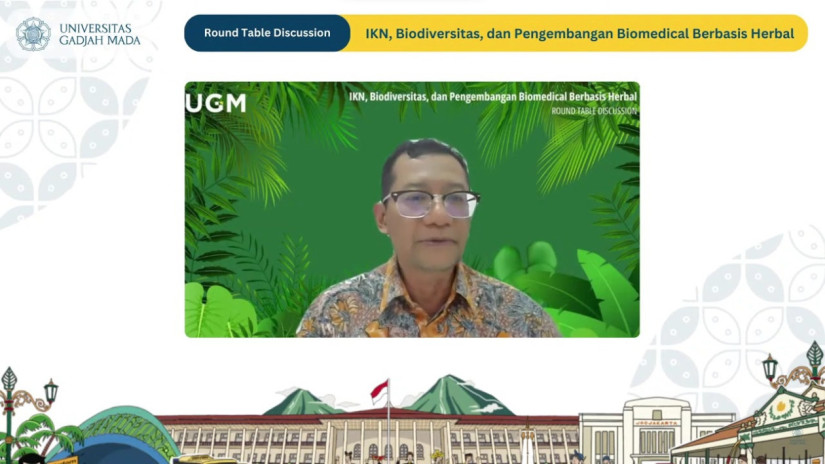
Indonesia’s new capital, Nusantara (IKN), nestled in the Penajam Paser Utara and Kutai Kartanegara regencies of East Kalimantan, emerges as a treasure trove of biodiversity.
It encompasses a mosaic of ecosystems, from tropical rainforests to aquatic realms, providing sanctuaries for diverse life forms. This reservoir of life beckons scientific exploration, particularly in health.
In response, Universitas Gadjah Mada (UGM) orchestrated a roundtable discussion titled “IKN, Biodiversity, and Herbal-Based Biomedical Development” on Tuesday (Nov. 28).
“Kalimantan is a goldmine of biodiversity, notably medicinal plants. Approximately 80% of the world’s medicinal plant species thrive in Kalimantan,” said Professor Mustofa from the UGM Faculty of Medicine, Public Health, and Nursing.
“With approximately 25,000-30,000 species of medicinal plants registered with the Indonesian Food and Drug Authority (BPOM), the full transition to IKN holds tremendous potential.”
These medicinal plants, already integrated into the traditions of the 55 Dayak tribes in Kalimantan, encompass potent varieties like tongkat ali, ant nest, yellow root, sekungbak, bajakah, and more.
Numerous studies substantiate the efficacy of herbal plants in Kalimantan in addressing concerns such as cancer and internal organ disorders and serving as prospective raw materials for cosmetics.
Despite these proven benefits, the untapped potential in the industry awaits exploration. Professor Mustofa underscored the challenge of interdisciplinary collaboration, highlighting the gap between industrial, governmental, and community sectors concerning the vision for harnessing the biodiversity potential in the IKN region.
The IKN’s potential has been conceptualized since the inception of the capital relocation plan. The forest city, sponge city, and smart city concepts form the bedrock, as outlined in Presidential Regulation No. 63 of 2022.
Maximizing this potential demands meticulous identification and tailoring development to the unique conditions and challenges. Consequently, IKN’s development pivots on sustainability, ensuring the efficient, optimal, and sustainable utilization of biodiversity potential.
“Biodiversity data is one of the challenges. Understanding the availability of these species in their natural habitat is crucial for utilization. Take the bajakah plant, for instance—it’s a generic term encompassing various genera rather than a specific species,” added Professor Ratna Susandarini from the UGM Faculty of Biology.
“Thus, biodiversity data is indispensable, as the fundamental bedrock for biomedical sciences development.”
Beyond plant species, the condition of Kalimantan’s forests and diverse wild species residing beyond primary forests warrant attention, posing risks if production forests encroach upon their habitats.
Professor Susandarini emphasized that developing the forest city necessitates a blueprint for a well-structured ecosystem. The amalgamation of various life facets in a forest city mandates research to chart how wildlife, forests, humans, and industries can coexist within a singular ecosystem.
“Research on IKN itself is still in its infancy. While a wealth of keywords are emerging for biomedicine in Java or Kalimantan in general, the IKN area remains underexplored,” she added.
The linchpin for optimizing IKN’s development lies in fostering a shared vision among the government, academia, industry, and the community. Unleashing the latent potential of promising biodiversity calls for a delicate dance with sustainability aspects.
Rigorous policies and vigilant self-monitoring are imperative in the IKN conservation area. Through collaboration and cooperation, IKN, as the forest city, endeavors to burgeon into an ecosystem that harmonizes human needs and biodiversity.
Author: Tasya

